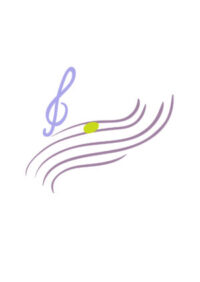The main content of this lesson involves the Music Staff.

1. The Music Staff
The notes are written on the Music Staff.
The staff has 5 lines and 4 spaces.
Lines and Spaces
The music staff, also known as a stave, is a set of five horizontal lines and four spaces that represent different pitches in music notation. The staff is the foundation for notating and reading musical notes, providing a visual guide for musicians to interpret the notes that they need to play.
The music staff is where you draw the music notes. The standard staff has five lines and four spaces, and each line and space represents a different pitch.
How you read the staff depends on the clef that is drawn at the beginning.
2. Measures and Bar Lines
Measures, also known as bars, are segments of time in music defined by a given number of beats, over which notes, rests, and other musical elements are placed. The beginning and end of each measure are indicated by vertical lines called bar lines. The time signature of the song determines how many beats are in each measure and which note value is equivalent to one beat. The bar line divides each measure.
Bar lines are vertical lines that cross the staff and divide the music into measures (or bars).
3. The Clef
The clef tells you how to read notes on the music staff. There are a few different clefs.
The treble clef tells us that the note G is on the second line on the music staff.

The bass clef tells us that the note F is on the fourth line on the music staff.

Free Course

Free Course Music Theory: Treble Clef
This course teaches music theory to beginners. It includes text, exercises, examples, illustrations, videos and animations. If want to learn music theory from the very beginning and you don’t know how to read a music score.
